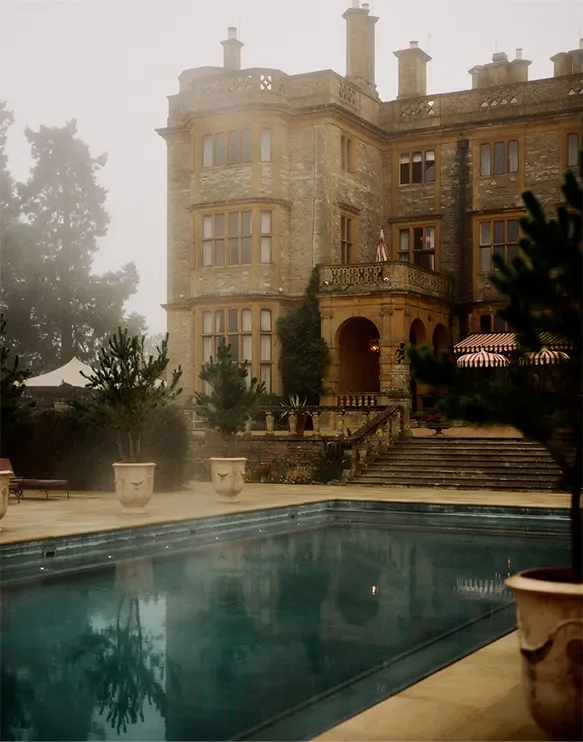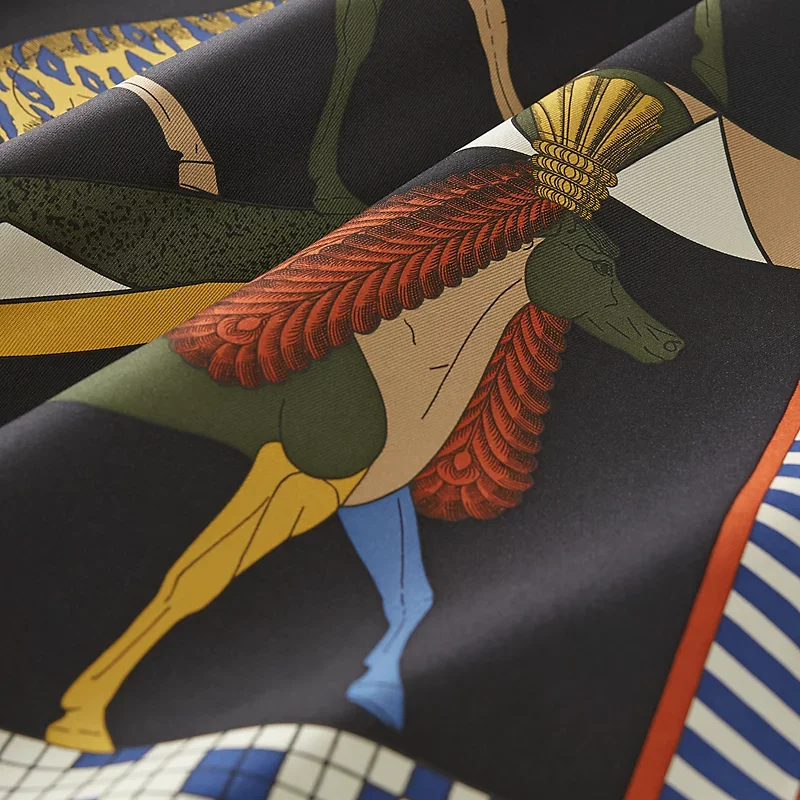From Short Stories to Bold Brand Sagas: A Longer View On Luxury Narratives
Feature by FerebeeLane.
Source: Shutterstock
There are few terms in the modern marketing lexicon more overused — and sadly, abused — than ‘story.’ Commercial storytelling is of course nothing new, but over the last decade something has shifted. Once-rich narratives have been swapped out for the thinnest hint of intention and arc. Short, simple, and increasingly nondescript, these abbreviated ‘brand stories’ (and the glut of soulless ChatGPT iterations now based on them) read like a condensed mix of high-performing keywords and marketing-speak du jour. Dressed up as quippy manifestos, most seem more like soundbites than rich stories capable of distinguishing and directing a brand.
Given this shift, even those of us with a deep commitment to storytelling find ourselves searching for different ways to describe meaningful marketing narratives. This is certainly the case in the world of luxury, where best-in-class brands still weave elaborate and evocative tales with their products and experiences. In this elevated context, the most compelling brand stories remain meaningfully complex instead of simple. They are unapologetically substantial. They are long, at least in a figurative sense, rather than short.
A clear contrast to today’s shallower take on storytelling, these ‘longer’ luxury narratives operate more like the grand world-building and elaborate myth-making found in classical sagas. Explored here, the historical saga offers a framework for evaluating and articulating more meaningful stories for today’s most prestigious brands.
Multi-faceted and multi-generational, instructive and inspirational, the saga depicts how brands can rise above the mere ‘telling’ of a simple story into something more active, more scalable and more significant.
Heroes and Conflicts
At the heart of every saga is a hero facing a quest or challenge. When it comes to luxury, this “hero” is rarely a product; it’s a vision or visionary conquering a particular problem or adversary. Often a market force, unmet desire or oppressive societal dynamic, this adversary or antagonist is as critical to a brand saga as its hero.
Land Rover illustrates this concept well. The heroic origin of Land Rover’s tale is the tenacious ingenuity of the Wilks brothers, who in 1947 famously sketched the outline of their hallmark Series I on a Welsh beach. The intrepid brand’s antagonist? Timidity. Caution. Post-war rubble. Unpaved anything. In the face of scarcity, material rationing and a nation in disarray, the brothers built a beyond-capable symbol of British confidence and adventure.
The Series 1 wasn’t just a vehicle, it was a bold call to continue the journey, to keep moving without hesitation. It was a heroic tool stubbornly built out of surplus aluminum, ready to go ‘above and beyond’ (in the brand’s own immortalized language) to conquer a rugged, challenging world.
Land Rover still draws on this narrative lineage. Every vehicle is a descendant of that original heroic act of fortitude, and every owner is part of a mythology that isn’t just about horsepower or off-roading competence or even elegantly appointed interiors. It’s about sophisticated resilience. It’s about determination. It’s about drivers who don’t hesitate, no matter the obstacle or terrain.
Codes and Values
Just as a saga’s hero is governed by a code of values and immutable laws, the underlying spirit and value system of luxury brands can be understood as the driving force behind their actions and decision making, too. Unlike dry brand pillars and ever-practical (yawn) mission statements, a saga brand’s code is an irrepressible, often polarizing ethos that dictates every decision it makes. It’s the lens through which the brand sees the world, and it’s the differentiating perspective that allows it to shift and scale while remaining true to its origins.
Although it’s easy to imagine this code-driven clarity developing over time in a mature brand, it’s important to note that it can also be strategically developed in new brands. Hospitality innovator Ennismore did just that with Maison Estelle in Mayfair. The private club brand — which is personified by the fictional muse ‘Lady Estelle’ — stands in stark, stylish contrast to the seriousness and self-importance of so many classic British members’ clubs. Here, there’s nothing to prove, just connections to savor, beautiful moments to toast, and countless stories to share.
Pretense and drudgery are this hero’s antagonist, and unstuffy cultural sophistication is its code. That code not only informed every aspect of the experience within Maison Estelle, it also served as a scalable decision-making model for the brand’s sister property in the country: the sprawling Estelle Manor club and hotel in Oxfordshire. Estelle Manor’s radical reinterpretation of private club lifestyle, and its vibrant transformation of a Grade II-listed landmark estate, demonstrates just how valuable a poignant narrative code can be to modern luxury brands.
Estelle Manor, Oxfordshire. UK.
More than a rigid map of dos and don’ts, this value system is an enduring compass that helps determine how to leverage amenities and interiors and pursuits and hospitality to delight members. It inspires the playful, welcoming tone of both properties’ refined-yet-relaxed style of service. It also informs the delightfully eclectic food and beverage offerings. At every turn, Lady Estelle’s mythological sensibilities immerse members into a charmingly opulent, wonderfully well-traveled lifestyle. The brand’s underlying code is such a source of clarity and inspiration that it’s now driving an entirely different but perfectly aligned venture: the recently launched Lady E fashion collection.
Wisdom and Magic
From enchanted swords and secret spells to arcane knowledge that only a fortunate few possess, no saga is complete without a bit of lore and magic. In the luxury sector, that often manifests as proprietary craft or enchanting, behind-the-curtain access.
The narrative element not only differentiates luxury brands, it also makes one of the most powerful arguments for their premium price. If a product or experience is infused with secret wisdom or almost-magical attributes, then its purchase isn’t just a transaction. It’s a tribute to something rare and wonderful, something that cannot and should not be rationalized.
While a saga brand’s wisdom is very often technical, it’s expressed in a way that blurs the line between skill and alchemy. Hermès provides a useful example. The couture brand’s equestrian roots, which are codified as part of its enduring value system, are apparent in everything from materials to motifs. The sellier or saddler’s stitch, however, isn’t just part of the brand’s manufacturing process. It’s the celebrated, magical topstitch method through which luxurious leathers are transformed into the world’s most iconic handbags. Similarly, the fashion house’s prized carré scarves aren’t just produced. They’re each delicately handcrafted from the cocoons of 300 silkworms raised on a strict diet of Mulberry leaves, then loomed and screened in a private facility that can only rarely be toured — and only then by special permission.
Coveted craft. Exclusive access. Secret knowledge. It’s all part of the magic and myth that differentiates a luxury brand from the ordinary, commoditized world.
Telling Longer, Better Luxury Stories
Together, these saga-inspired components offer a different way to examine and articulate luxury brand meaning and messaging. They paint a picture of heroic origins and action, they demonstrate the enduring utility of clear codes and values, and they underscore the differentiating power and allure of wisdom and magic.
Unconstrained by the current trend toward shorter, shallower brand thinking, the saga framework contemplates how top-tier brands can create thematic worlds so rich and enchanting that discerning consumers can’t help but want to be part of them. To understand them. To immerse themselves in them. To connect and reconnect with them time and time again. That of course is no task for short, simple brand soundbites. It is, perhaps, better suited to the mythological realm and long-story structure of sagas.
FerebeeLane is a brand strategy and creative agency that works with premium and luxury brands to engage the discerning affluent consumer. For the past 20 years, the agency has collaborated with beloved brands such as Le Creuset, Blackberry Farm, Miele, The Ritz-Carlton, Baker McGuire Furniture, Vail Resorts, Chimay Trappist Beer, as well as numerous other Relais & Châteaux properties, and other luxury brands throughout the home. To learn more about FerebeeLane or our perspective on the discerning affluent consumer please contact Josh at josh.lane@ferebeelane.com




